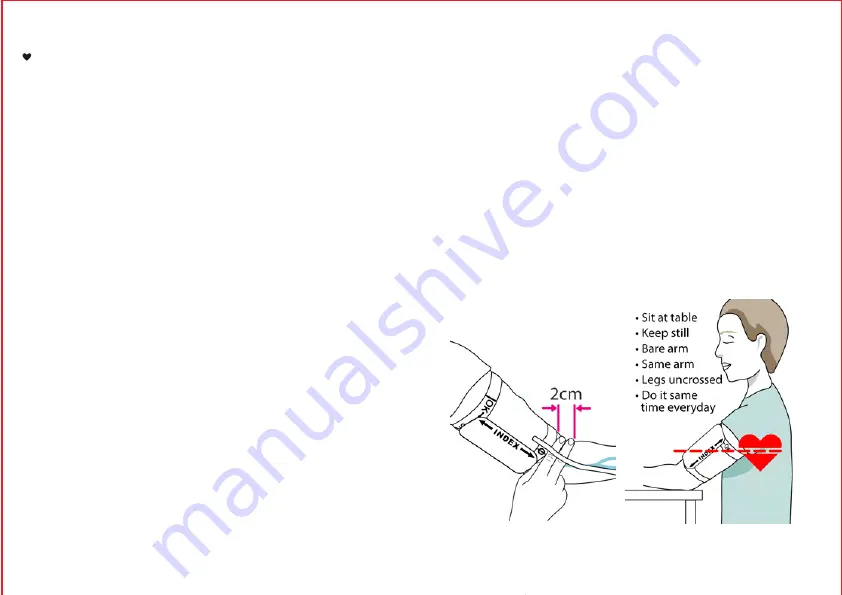
11
10
Ti
ps Before Your Reading
Tip 1:
Try to take your blood pressure at the same time
each day. It will vary throughout the day. Doing this in
the morning as part of your daily routine is a good time,
or whenever your medical team recommends you
perform a reading.
Tip 2:
Sit down and relax for 5 minutes before each
measurement. This is important to get consistent
readings. It is often easier to do this at home when there
is less stress.
Tip 3:
Sit in a chair, with feet flat on the floor, legs
uncrossed. Rest your arms on a table located in front of
you so that the device is level with your heart.
Tip 4:
Remove clothing on the upper-arm so that the cuff
can be placed on bare skin.
Tip 5:
When placing the device on your upper-
arm, ensure that the
c
uff is secured within the OK region
and the air hose runs down the inside of your arm.
Tip 6:
The bottom of the cuff should be 1-2 cm (about 1
or 2 fingers) above the bend in your arm.
Tip 7:
The device has a small
to
large
-sized
circumference cuff
. E
nsure that the cuff is secured firmly
together at the Velcro patches to stop the cuff slipping up
or down on the upper-arm for a consistent reading.
Tip 8:
Keep still for the duration of measurement.
Moving, talking, eating, drinking or any other activity will
produce errors.
Tip 9:
Use the same arm each time. Ideally the left arm
(if you are right-handed) or vice versa.
Tip 10:
Completely deflate the cuff and wait 5 minutes
between readings if you decide to take another
measurement. Remember that the cuff applies pressure
and this restricts blood flow into your lower-arm.
S
ST
R
P
T
TA
O






























